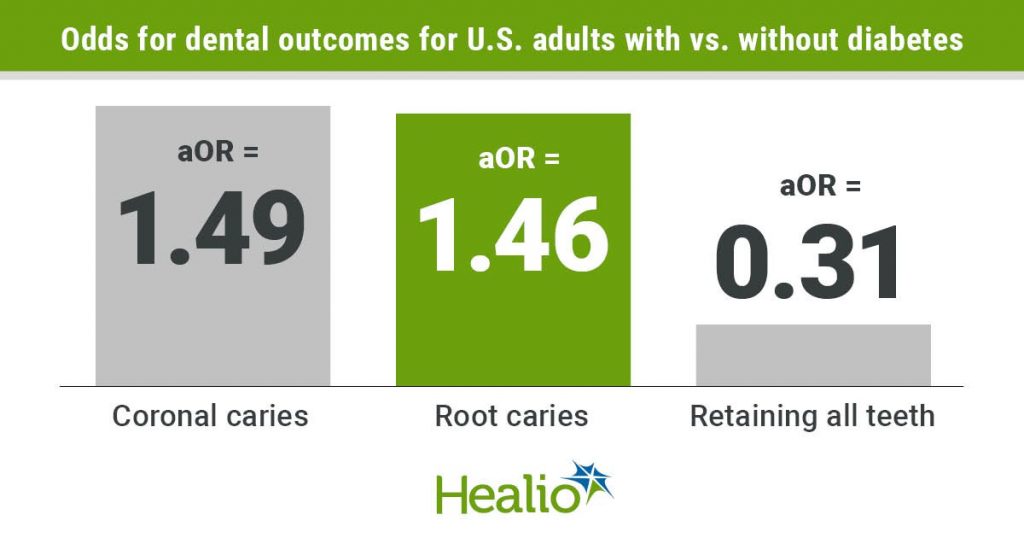Adults with diabetes in the U.S. are more likely to have dental caries and a higher mean number of missing teeth compared with those without diabetes, according to study findings published in Diabetic Medicine.
“The most recent population-level assessment of the relationship between diabetes and dental health in the United States found that individuals with diabetes have 2.25 times the odds of being edentulous and have an average of 3.1 more missing teeth compared to individuals without diabetes,” Muath Aldosari, BDS, MPH, DMSc, assistant professor at King Saud University College of Dentistry in Riyadh, Saudi Arabia, and lecturer at the Harvard School of Dental Medicine, and colleagues wrote. “However, the study examined tooth loss only among 50 years or older adults using the 2003-2004 cycle of the National Health and Nutrition Examination Survey. Therefore, this study aimed to evaluate the associations between self-reported diabetic status and clinically assessed dental endpoints, including untreated coronal and root caries, missing teeth and routine dental service utilization.”
Researchers analyzed data from 10,249 adults aged 20 years and older who completed a dental examination and self-reported their diabetes status to NHANES from 2015 to 2018. The prevalence of untreated coronal and root caries in adults with and without diabetes was calculated. The number of teeth with dental caries, number of missing teeth and the percentage of participants retaining all of their teeth were also measured. Participants self-reported whether they had visited a dentist in the previous 12 months.

Of the study cohort, 11.3% reported having diabetes. Untreated coronal caries were present in 24.6% of the study cohort, and untreated root caries were observed in 13.1%.
In an adjusted logistic regression model, adults with diabetes were more likely to develop coronal caries (adjusted OR = 1.49; 95% CI, 1.08-2.04; P = .015) and root caries (aOR = 1.46; 95% CI, 1.19-1.8; P = .001) than those without diabetes. Adults with diabetes were less likely to retain all of their teeth than those without diabetes (aOR = 0.31; 95% CI, 0.26-0.36; P < .001).
In Poisson regression analysis, adults with diabetes had a higher mean number of teeth with untreated coronal caries (adjusted mean ratio = 1.34; 95% CI, 1.12-1.6; P = .002) and a higher mean number of missing teeth (adjusted mean ratio = 1.35; 95% CI, 1.18-1.55; P < .001) than those without diabetes. Women were more likely to be missing teeth (aOR = 1.12; 95% CI, 1.02-1.23) but had a lower mean number of teeth with untreated coronal caries (adjusted mean ratio = 0.76; 95% CI, 0.66-0.87) compared with men.
About two-thirds of the cohort reported going to a dental appointment in the previous 12 months, with no difference between those with and without diabetes. Women were more likely to go to a routine dental visit compared with men (aOR = 1.48; 95% CI, 1.28-1.72).
“The study sheds light on the importance of an integrated health care system that includes, but is not limited to, both medical and oral health services that provide easy access to vulnerable populations to improve oral health literacy and access to dental services utilization within the diabetic population,”
the researchers wrote. “It is imperative for dentists and physicians to educate both themselves and the population they serve regarding the intersectionality of oral and general health for the improvement of oral health, overall health and quality of life.”